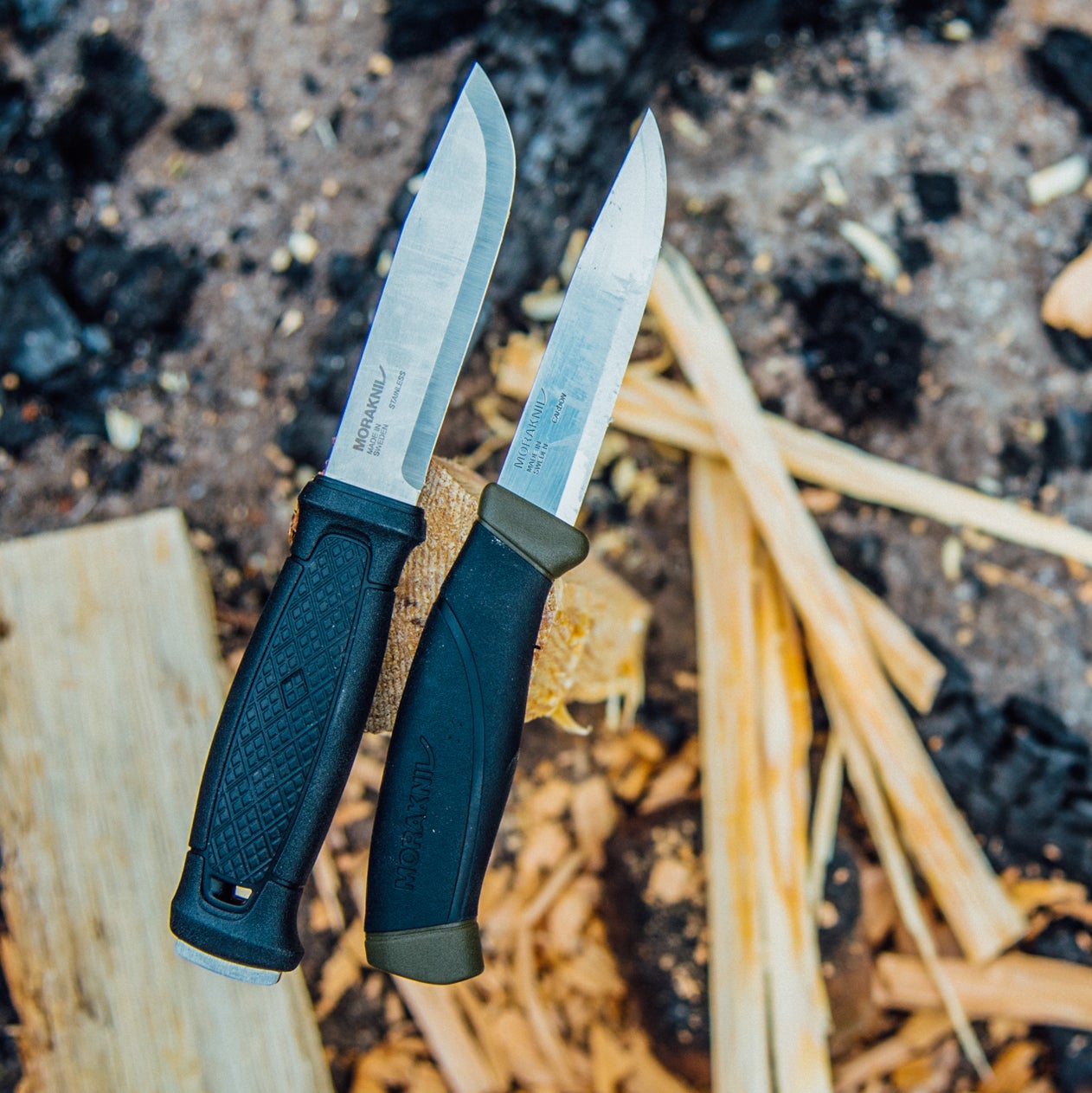Since 1891, has made simple, fixed-blade knives in Sweden that pack a shocking degree of quality and utility into an unbelievably affordable package. Widely available for just $15 or so, the classic Companion is all the knife anyone could ever possibly need for general outdoor use. We’ve said it before and it remains true now: spend more money on a knife because you want to, not because you need to.��
But��that Companion does have a couple small weaknesses that do make people want to spend more: its blade is not a full-tang design, and it’s a little on the thin side for some truly abusive tasks.��
Very thick blades and full-tang designs have been en vogue as of late. Visit or any other online home of late night, half-drunk knife talk and the clear winners in any debate are monstrously thick, incredibly strong, way overbuilt designs that are more akin to sharpened pry bars than they are to the kind of knives most of us actually need for day-to-day use.��
Morakniv saw rabid fans of its blades spending more money on bigger, stronger knives, and decided to release this new Garberg in response. It’s bigger and stronger than the Companion in every way. But��does that make it a better knife? We spent a few weeks using both around the house��and on a camping trip to find out.��
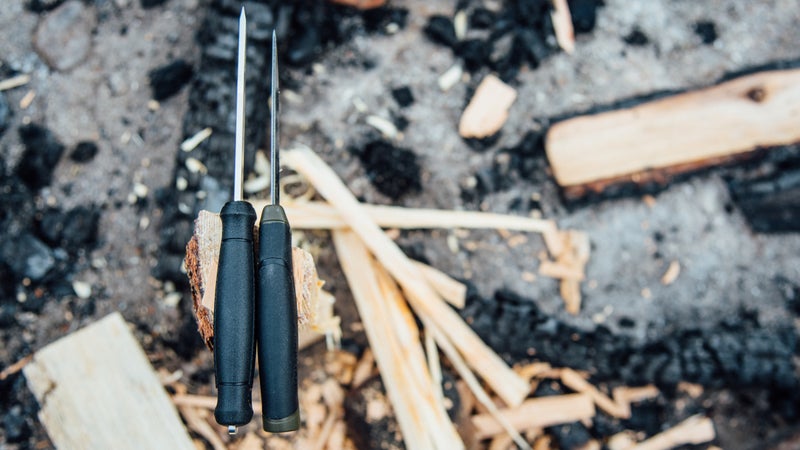
Blades
Both knives use a classic, drop-point blade shape and claim to use a Scandi grind (more on that in a sec). The Companion’s is 103��mm��long and 2.5 mm thick. The Garberg’s is 109��mm long and 3.2 mm thick.��
Thicker is stronger is better, right? Not so fast. The Garberg runs into one big problem due to that additional 7/10ths of a millimeter: it’s now too thick for a proper Scandi grind to work, so instead uses what some people call a “modified” Scandi grind, but is .��
I know not everyone out there can (or wants to) be a total knife nerd, so let me explain. The manner in which a blade’s edge is ground determines the way it slices through stuff. And since a knife’s job is to slice through stuff, it’s a pretty important feature. With a Scandi grind, the angle from the point of the edge continues at a very acute angle, to a point a centimeter or so up the blade. So, as the knife cuts through a material,��that’s taking place from a very thin edge, spreading the material minutely over a relatively long distance. If you look closely at the Garberg’s edge, you’ll see that there’s another, broader grind right at the knife’s edge, which means the material being cut has to be severed much more abruptly, requiring more force. Scandi��wouldn’t work on this thicker blade stock because it would take too long to go from flat to point, leading to weakness.��
So, grab both knives and attempt to shave a little flake off a piece of wood. The Companion will do that with less effort and therefore more control, while producing finer work and a thinner shaving. The Garberg requires you to push harder for a less refined result.��
The opposite is true for larger jobs, like splitting. The Garberg’s thicker blade stock is simply a better wedge, separating wood more effectively.��
Then there’s the blade steel. There’s absolutely nothing wrong with the basic, high-carbon steel used on the Companion. It holds an edge for a reasonable amount of time, and is honestly better for most people because it’s so incredibly easy to sharpen. But��it will discolor if exposed to moisture, and if you don’t keep it wiped down in some sort of light oil (use a food oil like grapeseed if you use your knives for food prep). The Garberg uses a new-to-Morakniv 14C28N Swedish-made stainless steel that’s much harder than that of the Companion. That means it’ll hold an edge longer and won’t discolor, but conversely it also makes the knife much harder to sharpen.��
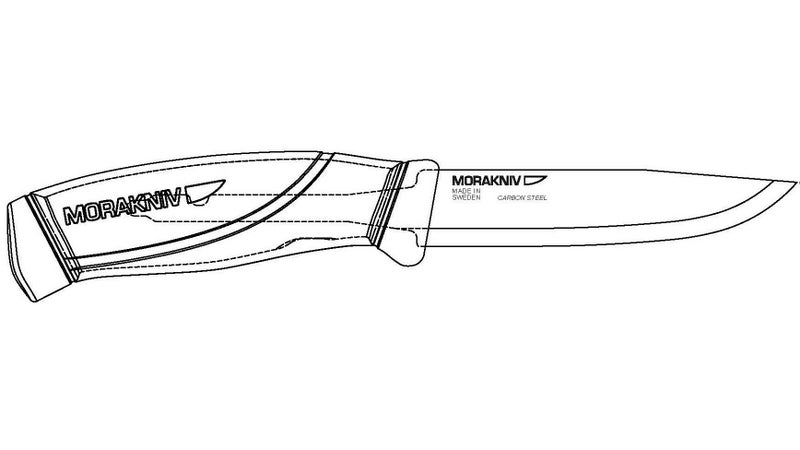
Then there’s the tangs. Where the Companion inserts the blade into the handle with a tapered section, the Garberg’s continues full width, full thickness, all the way through; its handle wraps around the steel. Are you realistically going to separate the Companion’s handle from its blade? Over a decade or so of using various Morakniv designs, I’ve never created any play in any of mine. You could, theoretically,��if you’re��pounding one through logs really hard, all the time, but I don’t think partial tang is a realistic concern with blades in only the four-inch range; there’s just not as much leverage created as there is on longer, six-inch plus survival knives.��
Winner: Companion. Its high-carbon steel is an excellent choice for most users and its true Scandi grind is both versatile and capable. In realistic use, the partial tang design is strong enough for a lifetime.��
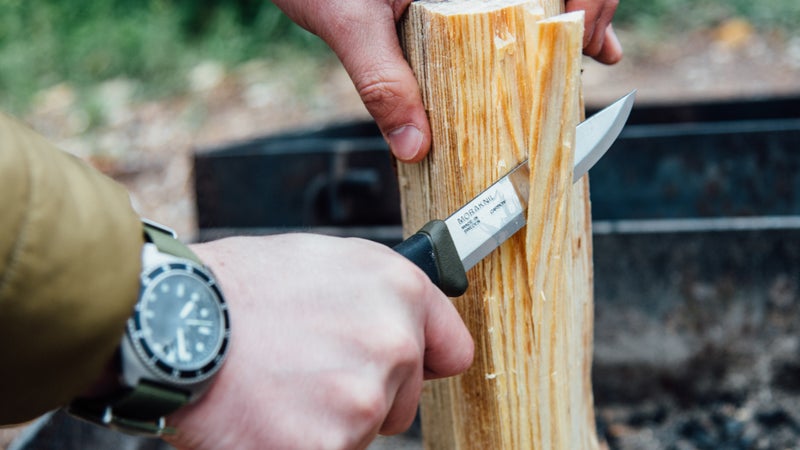
Handles
On the Garberg, Morakniv set out to make the handle as indestructible as the blade. It’s made from a very strong, high density polyamide material, patterned with checkers for added grip. Its round shape is comfortable in your hand, but despite the checkering, the material is noticeably slick, even while dry. Add some sweat or rain, and you run real risk of having your hand slide down��onto the blade. This problem is exacerbated by the lack of a finger guard.��
Conversely, the substantially cheaper Companion is fitted with a soft, rubber grip that not only feels nice in your hand, but provides excellent traction. Its handle also includes a decent finger swell next to its blade; your hand is never going to slip.��
Winner: Companion. It’s not even close,��the cheaper knife feels way nicer and provides much more safety.��
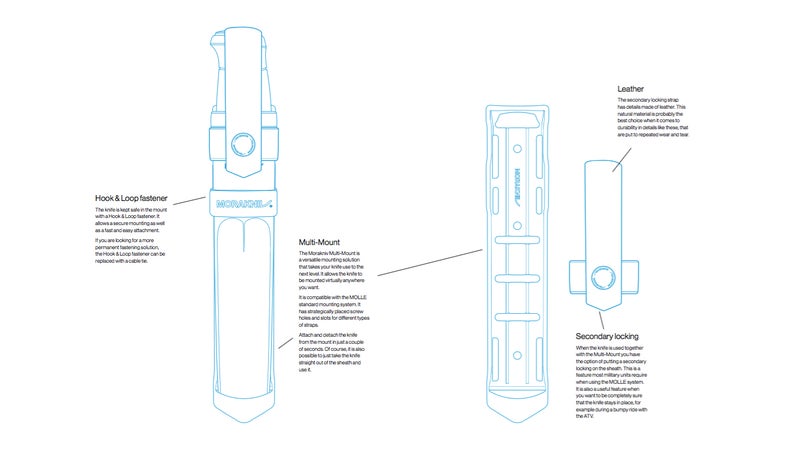
Sheaths
The Garberg will be available with two sheath designs: a classic leather drop configuration, and their new, MOLLE (read military gear) compatible “multi-mount” plastic design that allows the knife to be configured vertically, horizontally, or even upside down, and which holds the knife securely. A pre-production example (sales start later this spring), the Garberg tested here included neither, so I have not used the above.��
The Companion uses Morakniv’s simple, old plastic affair that holds the knife in with tension between it and the rubber grip. It can only be carried vertically, by its integrated belt loop, or affixed to a nailhead or bolt or similar in a vehicle or workshop.��
Winner: Garberg. The leather is classy and functional, the Multi-Mount will be useful and versatile.
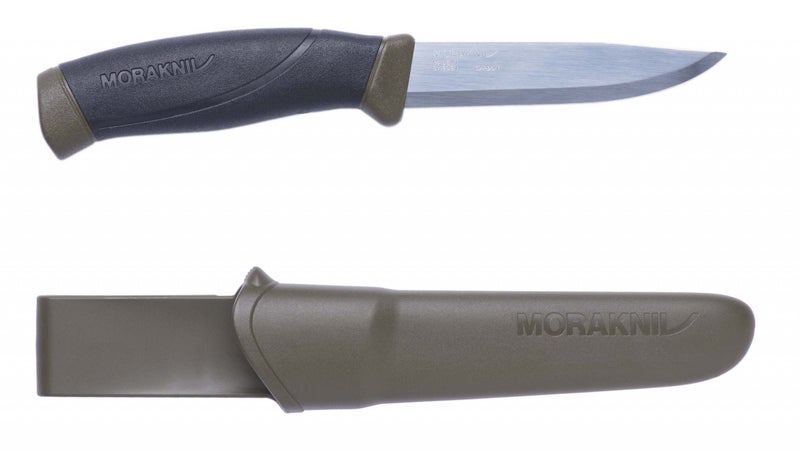
So Which Knife Is for You?
This one’s going to be very simple. The Companion costs $15, weighs just 116 grams, and remains an excellent all-round option for any knife user. It’s as home in the kitchen as it is in your workshop, in the woods, or on a boat, and it can filet a fish as well as it can help make a fire. It’s also probably the best companion (har)��for ultralight backpackers in existence. Factor in that low price and it’s probably the best knife out there, period.
With an anticipated price of $100, the 272-gram Garberg really only excels at processing wood. And, at that price, it runs into some very stiff competition from other brands. For just $5 more, ,��which has a more comfortable, safer handle, a superior full flat grind (one big wedge splits wood best), and which is even bigger, stronger, and more likely to impress other knife nerds on the Internet.��
Want to learn how to use a knife in the outdoors? .��


